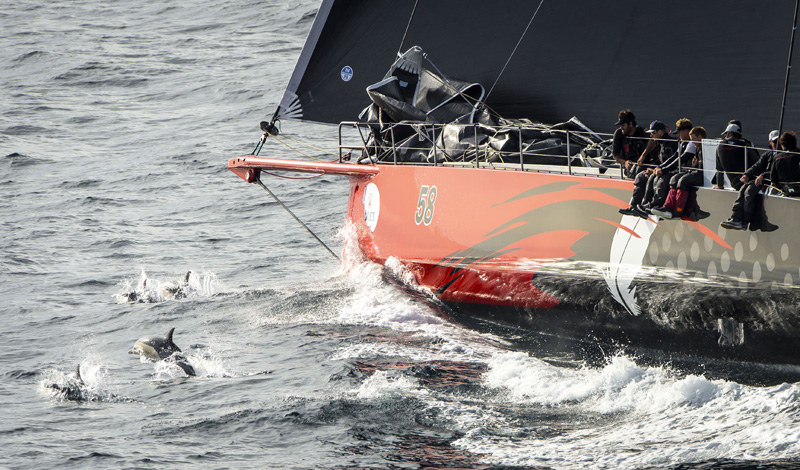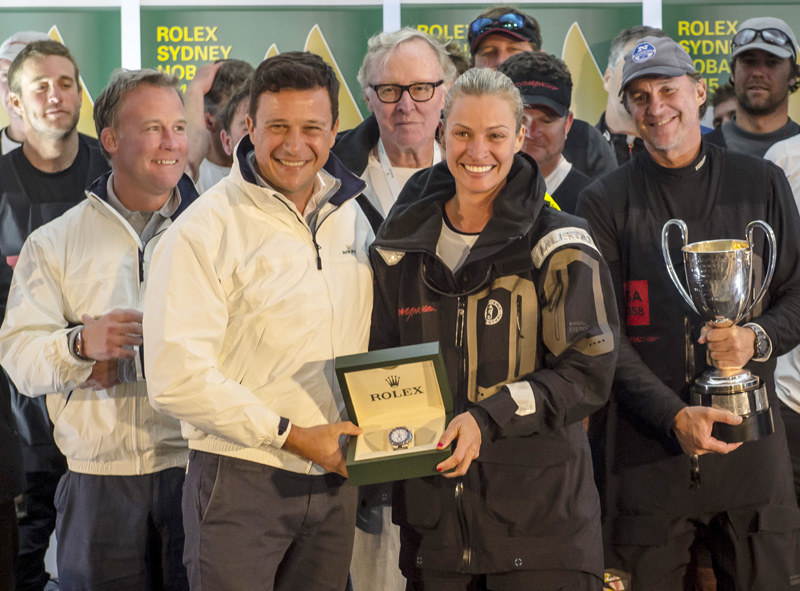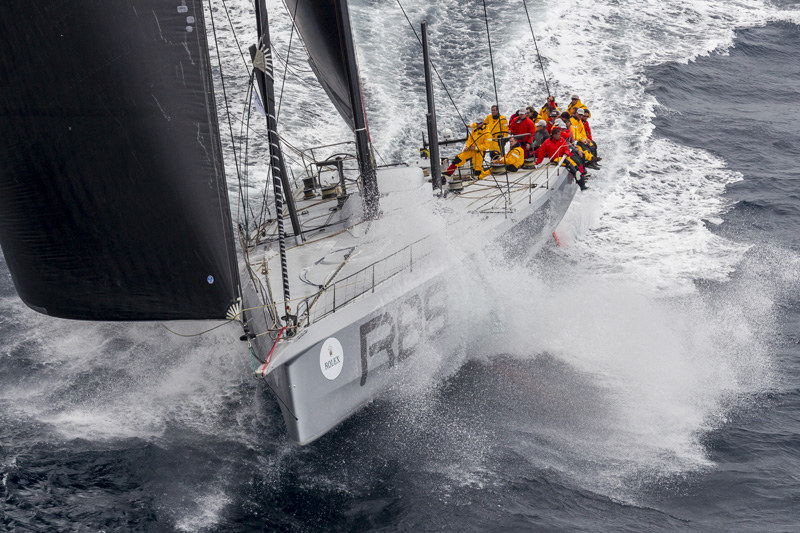
Comanche Takes Hobart Line Honors

The Rolex Sydney to Hobart — one of the greatest spectacles in all of yachting — is always a thriller, and the 2015 event was one of the most exciting in recent memory. Consistently attracting a world-class fleet of racing yachts replete with 100-ft supermaxis, breeze from nearly every direction and velocity, and huge crowds of spectators at both the start and finish, the race has become the stuff of legend. For 2015, the 71st edition has become an instant classic with story lines that even a Hollywood screenplay writer would struggle to write. The bulk of the 108-strong fleet lit the afterburners off the start, propelled down the New South Wales coast by a brisk nor’easter before being decimated by a classic Southerly Buster. In the aftermath of that front, the reigning champion Wild Oats XI was knocked out with one punch while a duo of American boats — both damaged by the same storm front — swooped in to steal the show.
When Jim and Kristy Clark’s big black 100-ft VPLP/ Verdier-designed supermaxi Comanche sailed into Hobart at the head of the fleet, her crew completed a story that will go down in the annals of yacht racing history and be told for decades to come. Having sustained damage to both the port daggerboard and rudder, skipper Ken Read (of North Sails and Volvo Ocean Race fame) initially reported to owner Jim Clark and the race committee that Comanche‘s race was over, as the steering system had been "shattered" and the boat was drifting downwind, back toward Sydney in the 40-knot southerly. Co-owner Kristy Clark inquired if the yacht could still win while much of the crew reached for the onboard tool kit, inspiring Read to make the now-famous quote, "We’re going to finish this damned race… even if we have to paddle the boat into Hobart."

Some thirteen hours after effecting emergency repairs and deciding to resume racing, Comanche had reclaimed the lead from American George David’s new Juan K-designed Rambler 88, which had also lost a daggerboard to a collision with a presumably submerged object. Sailing upwind on port tack — her "good" tack — the bigger, faster Comanche was able to pull away from the "little" 88-footer. Navigated by famed Bay Area product Stan Honey, the VPLP 100 managed to sail into better pressure than her smaller rival, claiming her historic line honors victory in just under 2 days and 9 hours, some 14 and a half hours off Wild Oats XI’s 2012 record pace. Upon reaching the dock in Hobart, Tasmania, skipper Read, co-owner Kristy Clark, navigator Honey, helmsman Jimmy Spithill and the rest of the Comanche crew were mobbed by a spectator and media presence that had to be seen to be believed.
As this article is posted, Rambler 88 is engaged in a close battle with Syd Fischer’s Ragamuffin 100, the only one of the Australian supermaxis to survive the attrition-filled race. Separated by less than a mile and sailing in the fickle breezes of the River Derwent, both yachts are battling in slow motion to see who can claim second-place line honors. Having just crossed Bass Strait, Eric De Turckheim’s French-flagged Archambault 13 Teasing Machine currently leads the fleet overall on handicap honors, though this is likely to change before the 44-footer reaches Hobart sometime tomorrow.

Stay tuned for further updates here and on the Rolex Sydney to Hobart website, as the bulk of the fleet still has a lot of race track before them and anything could happen.
